Thursday from Matthias Hoegg on Vimeo.
Thursday from Matthias Hoegg on Vimeo.
I can't figure out why I like these structures but one day I'll visit them all. The first is a series of pre-radar listening devices or acoustic mirrors in Dungeness.

Second is the sea forts at the Thames Estuary, Red Sands.
And lastly is the abandoned Bromhill Lido in Ipswich one of many which can be found on the incredibly beautiful 28 days later site- a real archive of forgotten and decrepit architectural treasures.
Great bits of tech scavenged from around the internet via BERG, Russell Davies, Its Nice That, and I can't remember where I found the projection mapping sand sculpture. (Fucking Wordpress is being weird I'm being stupid but I can't get videos to embed- you'll have to trust me and click the pics to check them out- sorry)
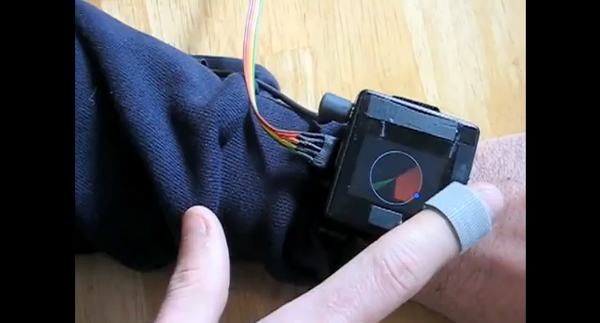



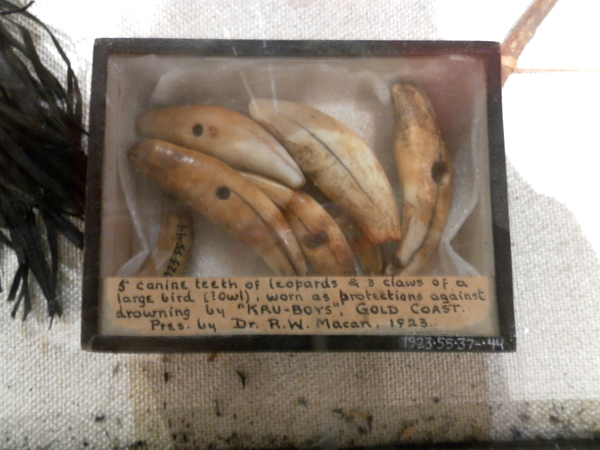
 The Pitt Rivers is different to every museum I have ever been to. First things first- you have to go through another museum to get there. That's beautiful to start with, a journey through the Oxford Museum of Natural History is a great thing in itself and a stone archway opens out onto a tall (3 or 4 normal stories high) squarish room which is just packed with cabinets and cases and exhibits.
The Pitt Rivers is different to every museum I have ever been to. First things first- you have to go through another museum to get there. That's beautiful to start with, a journey through the Oxford Museum of Natural History is a great thing in itself and a stone archway opens out onto a tall (3 or 4 normal stories high) squarish room which is just packed with cabinets and cases and exhibits.
When the Lieutenant-General, Augustus Henry Lane Fox Pitt Rivers gave his collection to the University (c1884) he specified that the museum should be organised by typology rather than the usual topographical or chronological systems museum visitors and curators are used too. This important distinction is what gives the Pitt Rivers it's character and feel.
Another fantastic thing about the museum is that a lot of the objects are on show, rather than hidden in an archive. As Pitt Rivers said "It is better to show three objects rather than one". You can see everything. As this is the case the cabinets and display cases become very crowded- this is again to do with the typological organisation of the exhibits. Because many of the objects are delicate the light is low and visitors have trouble seeing objects placed at the back of cabinets, or underneath shelves. However visitors are encouraged to carry torches (available for loan at the gift shop), to be used to hunt down and observe the reluctant, hiding objects.
Every space is filled with exhibits, the cabinets stand proudly in the middle of the room, underneath and around these are drawers which are all searchable by the visitors. On the walls more cases and drawers below and cupboards and cases above reaching up to the ceiling out of reach and almost out of sight. Some of the cabinets even have other cabinets inside them. All of these objects are made from dark worn wood, giving a very comfortable and academic feel, and opening a drawer and discovering a cryptic exhibit is thrilling. The objects in the displays have handwritten labels, often on the actual objects themselves. This unusual cataloguing system seems to say that the objects themselves are not that precious and that it is more important that they are here among everything else, as if what they represent rather than the object itself is the focus of the museum. Very pragmatic.
Whilst Pitt Rivers did do some collecting first hand, most of his acquisitions came through other people: anthropologist, ethnographers, archeologist, soldiers, auction houses and friends. Of course the museum came about through his passion, interest and not least, wealth, but I like the idea that he became a hub of collecting so that people would have him in mind when they saw something they might think it suitable for his collection. People coming to him with offers rather than him hunting them down. Another interesting point to make on this topic is that only 7% of the current collection is made from Pitt Rivers initial donation. That means that thousands of exhibits have made there way to the museum since then, It links nicely to a theory I have about how a collection will often act as a sort of magnet for other similar items.
In terms of the specific objects I enjoyed included the famous shrunken heads, the swords (I am boy after all), the human heart in lead 'heart' shaped container and the Greenland Tupilak figures. If I'd had more time there I'm sure there would be more on this list.
The effect that the Pitt Rivers has is profound. The subtle differences from other museums create a warm, cosy, intimate and personal space which is absolutely packed with character. Idiosyncrasies are embraced and celebrated- so what if the displays are packed so full you can't see all the exhibits? Come on one of the night visits and go around the whole place in torchlight and enjoy the feeling of discovery. The place is a riotous excess of pluralism and the 'other worldly' quality it has is giddying. The museum is montage rather than maths, feeling rather than fact and by placing so many different types of exhibit from so broad a reach into such a small space and into such close proximity it allows for wonderful random encounters and associations. At the heart of the Pitt Rivers though is a humanness which pervades throughout. A case full of oil lamps or travel charms shows how different people at different times came up with very different solutions to the same problem, it is this glorious juxtaposition of difference and sameness which the Pitt Rivers basks in.
I went to the opening (and only!) night of a show my friend Tomomi Sayuda was involved with called Nixon Art Mosh. Only really one guys worked jumped out at me, this was the illustration work of Andrew Hem. He exhibited landscapes from moleskin sketchbooks. I particularly liked the way that the actual sketchbooks were framed rather than just the pages, and also the way the images where framed on the page was great. When you were looking at the work the fact that the sketchbook was there in front of you was very apparent and you got a real feeling of effort and worth form them- I was very aware a person had spent time making these images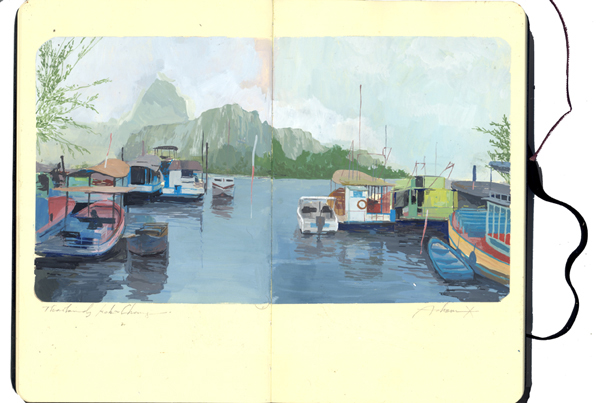
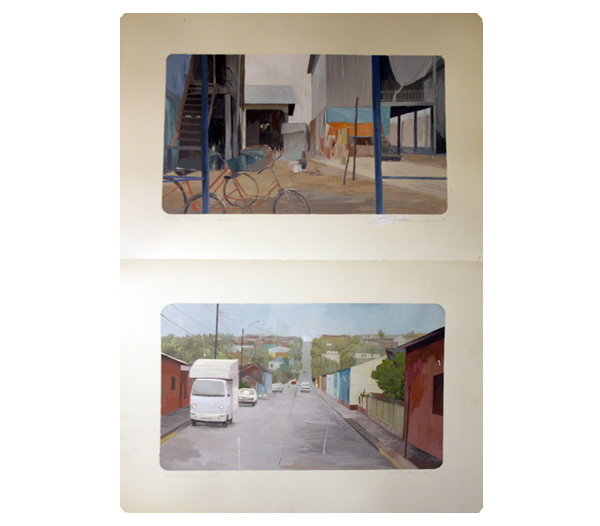 .
.
First up a lovely music video which my new studio chum Clara showed me, for The Mariners Children. The animation style is simple and genuine and kind of innocent, I really like it and can't put my finger on why- I think maybe it's the music video equivalent of a zine or something. Next up is a video showing the Tom Sachs studio rules. Beautifully done, funny and also some pretty solid rules. A nice insight into the workings of a great studio.

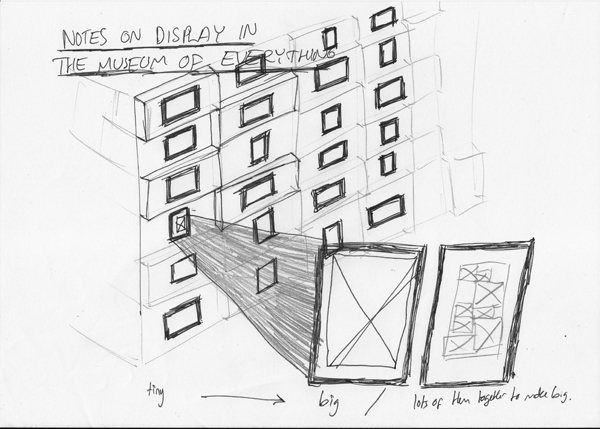 Me and my lovely girl popped over to the Museum of Everything over in Primrose Hill today. I had high hopes after last years first show which was brilliant (see old post here: post!).
The pictures above are a sticker you get on entry and a sketched version of, what for me was the most interesting hanging space in the whole show: a narrow corridor with breeze blocks hung with small frames holding small postcards. There were also large blow ups of some of the postcards (about a1 and bigger) which was a nice play on scale (a recurring theme), and also some large pieces made up of lots of small pieces (I know what I mean but maybe the picture will help if you don't).
Me and my lovely girl popped over to the Museum of Everything over in Primrose Hill today. I had high hopes after last years first show which was brilliant (see old post here: post!).
The pictures above are a sticker you get on entry and a sketched version of, what for me was the most interesting hanging space in the whole show: a narrow corridor with breeze blocks hung with small frames holding small postcards. There were also large blow ups of some of the postcards (about a1 and bigger) which was a nice play on scale (a recurring theme), and also some large pieces made up of lots of small pieces (I know what I mean but maybe the picture will help if you don't).
Firstly, as I say, I had high expectations and one of the things I didn't like as much as last time was the use of the space and the route they took you on through it. I have vivid memories of being guided through a minor labyrinth of small spaces and corridors to come to an opening which gave onto the top of a set of stairs and an enormous double or triple height space, the walls of which were covered in work- proper salon style. The amazing feeling of unexpectedness was really special to me, this time we were guided another way through the space (which had been reconfigured slightly anyway) and that moment of awe wasn't as poignant as it had been in the first show. Also the contrast of small rooms and corridors to large spaces wasn't as apparent as it had been.
Having said that the show still threw up the strange 'grotto' like environments which characterised the last show. Shells adorning an entire room reflected the obsessive nature of the collector and the room with the homemade miniature fairground which was animated 4 times an hour intoxicated as you waited for it to come to life and then left you with a childish giddyness 2 minutes later as it died.
The weird lighting made the badly placed plaques really hard to read but fortunately most gave little added information to the work. There were a few that felt right. One story about a screen that Sir Peter Blake had bought told how he'd purchased it rather than a roomful of stamps. The story left you not regretting that he hadn't bought them but you did want to see them, and I suppose it was more that you were intrigued by Peter Blakes' character rather than anything else- what decisions informed his choices and also wondering at the opportunities that were presented to him- who else is offered the chance to purchase a room full of stamps. Fantastic.
The light however did give some dramatic shadows which were really great but unfortunately couldn't be documented due to the 'No Photography' rule. This would have been fine but there was no affordable catalogue or any exhibition view postcards. (As you can tell I'm more interested in the display, feel and curation of this exhibition which often isn't documented in the 'gift shop' at the end. I don't like organisers and institutions to govern the visual 'memories' I take from a place.)
Now onto some of the work shown. Walter Potter was a taxidermist and he made dioramas of scenes cast with stuffed animals. The interesting thing about his work (other than the 'freak' 2 headed lamb and 3 legged sheep he taxidermied), was the use of scale it employed. In one scene a doll's house was used in place of a real house, makes sense. But then a normal cat cannot inhabit the same world as the scaled down house. In it's place a kitten is used, and puppies and baby mice and an assortment of infant creatures who themselves are strangely proportioned when compared to their adult forms. Then there is a cockerel- and here Potter used carefully selected and positioned feathers from an actual cockerel on a small former. Likewise a cow, even in infancy, is not the correct scale for this scene and so calf skin is stretched expertly over a cow shaped frame to produce the correct effect. This range of skills, techniques and real and 'fake' creatures leads to a crazy scene of miniaturisation and freakishness. I'm reminded of a quote from Calum Storrie ('From Soane to Soane' in Inventory Vol 2, No. 2, edited by Neil Cummings (1997).)
"Each railway station, car, gun and doll's house shows us our world made small. Of course by juxtaposing different scales of object this world is made absurd. So what at first, appears as a way of simply relating to the world (especially the world of made things) is actually a mad tableau which defies coherence."
I also really enjoyed how personal and intimate the whole Museum feels, the hand crafted feel reflects the outsider/folk art which it exhibits. Here I should give a nod to This Is Studio, who created the branding and graphics for the show- lovely stuff. Link: thisisstudio.co.uk. There is no getting away from the humanness of the show. The Museum is very accessible and welcoming. The curio/ freak show aspect of the work shown arouses the voyeuristic tendencies in us and, as the introductory panel encourages you- it's about the experience of it as much as anything else. Certainly as you enjoy a cup of tea afterwards you feel like the tip through the varied rooms, corridors, spaces and types of work was similar to an hour and half tour through the human mind.
The Museum of Everything runs until Christmas in Primrose Hill. Link here. Map here.